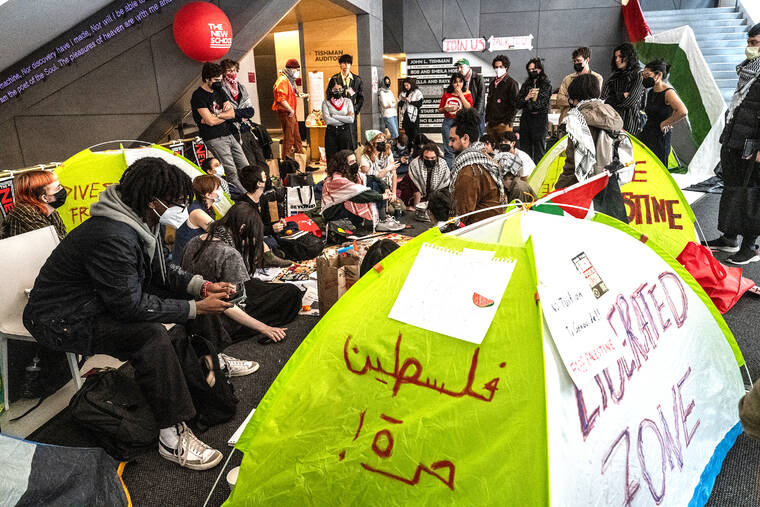Why the student encampments worked
As I watched news coverage of Chicago police clearing a pro-Palestinian encampment from DePaul University’s campus on May 16, I felt a familiar dread.
In my book, “Revolution Squared,” I discuss the famous encampment in Tahrir Square in 2011 and its implications for Egypt’s revolution. I have taught about social movements and political sociology for a decade. In the past several months, I have visited two student encampments in Chicago and, in both cases, I sensed the power of people in a liberated zone. The evacuation of these encampments brought to mind consecutive attempts by the Egyptian military to evacuate Tahrir.
Beginning at Columbia University on April 17, more than 100 campus encampments were erected across the United States. They raised critical demands about ending war and genocide in Gaza, calling for universities to divest from military and weapons manufacturing companies, financial transparency and free expression.
Most critics of the encampments ignore the larger set of demands and focus, instead, on the supposed antisemitism of the protests because they criticize Israel’s war on Gaza, despite protesters’ own statements denouncing antisemitism.
Israel’s war is still ongoing, but the movement has succeeded in forcing some institutions to divest from companies profiting from the destruction of Gaza, or at least to start the process of voting on divestment. The protests have already had a significant impact.
First, they instigated public conversations about university budgets and endowments. Most universities in the United States, including public universities, survive on tuition and private donations. But in recent decades, many top universities have reoriented their endowments toward aggressive investment strategies. By calling for universities to separate themselves from companies involved in Israel’s war, the movement has highlighted the increasing corporatization of higher education.
The protesters also prompted a much-needed discussion about campus policing. The American Association of University Professors has highlighted how campus policing has racist historical roots and continues to target racial minorities. The encampments exposed this problem when university administrators ordered campus and city police to forcibly evacuate the encampments.
Additionally, the encampments raised awareness about the Israel-Palestine conflict. According to a report by the Center for Constitutional Rights and Palestine Legal, the United States has a long-standing exception for free speech when it comes to Palestine. As a result, many faculty and students have been afraid to speak up. But for the first time on many U.S. campuses, students and faculty have defied this ban.
Finally, the protesters contribute to restoring our humanity. They tell us that we should not overlook the atrocities sponsored by our government in Gaza. They pressure us to care about the lives of people beyond our borders. Images and messages from Gazans giving thanks to these students remind us that we can truly advocate for human solidarity, democracy and equality.


